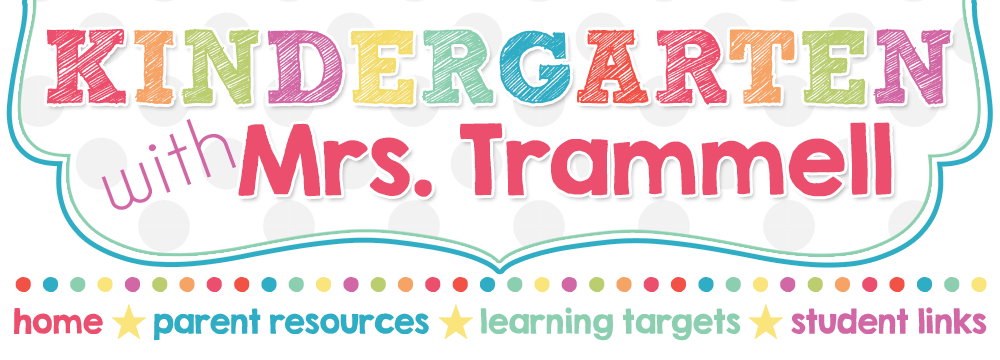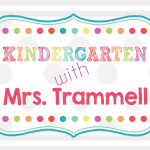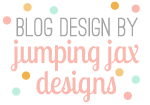Soon you will see papers like this coming home:
We're using it for both handwriting and phonics.
Handwriting
We're learning how to write all of the letters, both upper and lower case. When we write a letter, our target is to write the letter correctly. We'll know that we've hit the target when the letter is the right size and the right shape. The right size is the tricky one for most kindergarten students. The two lines you see might be different than what you are used to seeing. The top line is actually the mid-line, and the bottom line is the bottom line. Some letters, like all of the capitals, go above the mid-line (that top line). We talk about "bumping"the lines so that our letters will be the right size.
We're transitioning to primarily using lower case letters in our writing. When you see these papers, you might see a lot of letters I've written with a marker. It might look a little overwhelming sometime with all of the marker marks, but I'm just trying to demonstrate how a letter should look on this page. I know we're in the practice phase of handwriting, and I want students to visually see what the letter should look like in both size and shape. Kindergarten is a time to establish good handwriting habits. It may seem like I'm being picky, but I'm trying to set good examples.
Phonics
This paper is also a way for us to practice our letter sounds and spelling words. On the top row with the triangle, I say a sound and the students write the letter that makes the sound. On the second row with the square, we practice saying and spelling words. I will say a word and the students will repeat it. Then students stretch out the word to listen to the sounds they hear. Then they write the word writing the letters that correspond with the sounds they hear. The last two rows (the heart) is where we practice handwriting and sight words.
Most of the days we do this paper, we complete it together. I have an identical paper that the students help me fill out. This way, students can check their work against the class copy. They are encouraged to make corrections as needed, and everyone knows each answer before we move on to the next sound or word. So when the paper comes home, you might just notice marker marks made by me to help correct handwriting.
Sometimes you'll notice a score at the top. About once a week we will do the same routine but students will not be able to check their work against the class copy. It will be taken as an assessment to help me know how well the students are picking up on the letter-sound correspondence and how well students are figuring out how to spell simple words. Doing this helps me know when it's time to move on to a new letter or concept and when it's time to reteach certain letters and sounds. This time is similar to a quiz. I want to know what the students can do independently. The score on the top will show how many sounds / letters and words your child got correct. Since we don't have grades in kindergarten, I won't be recording the scores as an A or a B. I put the score on there so you would know two things: 1. The paper was done independently. 2. How your child performed. Remember, since I'm looking at handwriting, too, it might look like your child missed a letter or a word when really he or she didn't. If there is no score on the paper, we did it together in class and your child could see all of the answers as we went along. I'm really happy with our progress so far!
Last week I sent home alphabet cards in a baggie for your child to keep. Feel free to use these with your child to help learn letters and sounds.
Monday, November 23, 2015
Saturday, November 14, 2015
Apps for Math
There are lots of fun apps for learning or practicing math. Let's dive right in with some of my favorites in no particular order!
Base Ten Bingo is a great way to practice visualizing numbers and be ready for first grade math. I love how it's differentiated, too. This app is part of ABCya.com's family of apps, so if you and your child like this one, maybe you'll find others you like as well.
(currently free)
Everyday Math is our math curriculum for Carmel Elementary, so any EDM apps would be great. Beat the Computer is one of my favorites because who doesn't want to be smarter than a computer?
Truth be told I don't remember if I have the paid version or the free version, but this is one of my favorite math apps for kindergarten. Why? It's because of the variety of math skills offered. Typically apps for kindergarten math focus on number sense or computation, but Math Seeds has activities for practice in measurement, money, data, fractions, grouping, sharing, and more!
(currently free)
This app seems engaging to many kindergartners. Check out the daily challenges.
Top-It (for Everday Math)
(currently free)
(currently free)
Another Everyday Math app . . . easy way to practice addition.
As always, I recommend that you check out the app first before you give it to your child. A website I like using as a mom to check and see if media is appropriate for my own sons is commonsensemedia.org.
Subscribe to:
Posts (Atom)









